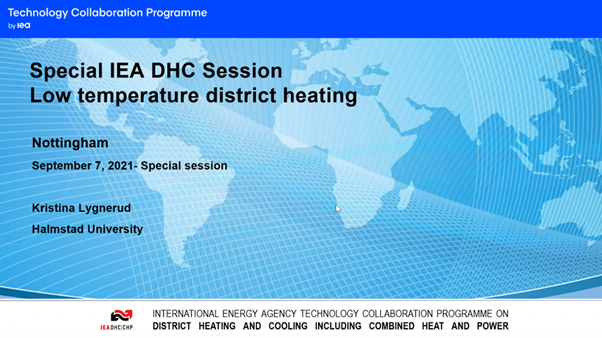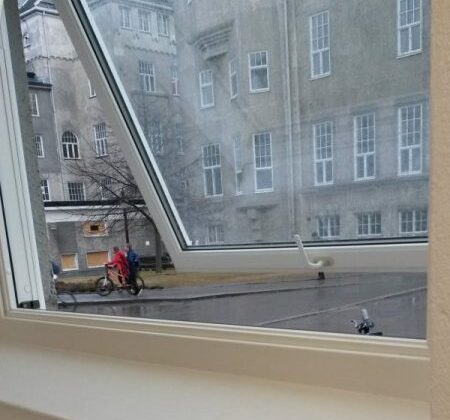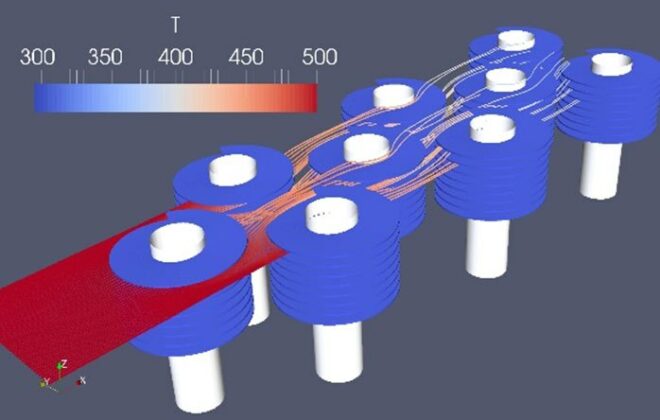New book on lower temperatures in heat distribution networks

In our new guidebook on low-temperature district heating implementation, we propose a toolbox.
Our guidebook contains aggregated information about the main economic drivers for low-temperature district heating. It shows how to obtain lower temperatures in heating systems inside existing and new buildings, as well as in existing and new heat distribution networks.
Toolbox to obtain low temperatures
Given customers have a substantial influence on a district heating system’s return temperature, a simple method is described for identifying crucial customers from an operator’s point of view.
In chapter 4, we go deeper into the following measures to obtain low temperatures:
- Tracking malfunctioning substations
- Identification of unintentional circulation flows
- Addressing bottlenecks in network sections
- Successful cases of reduced temperatures
- Sub-networks
- Cascading solutions
- Heat pumps to address subsection demands
- Increased decentralized supply
- Digitalization opportunities
- Design criteria for new systems
- New innovative supply and distribution concepts
Video from project overview
On Tuesday 7 September 2021, from 4.30 PM to 6:00 PM there was a live event where we presented the book. See video from the special session in the International Energy Agency Technology Collaboration programme:

About the book
This guidebook was written between 2018 and 2021 by seventeen authors that used approximately 15 000 hours of work within the IEA DHC TS2 annex. The content is based on more than 250 literature references and 165 inspiration initiatives to obtain lower temperatures in buildings and heat distribution networks. The author group wrote 40 internal documents about early implementations of low-temperature district heating. Book info by the publisher
Read full book here (PDF)
Author(s): Averfalk, H.; Benakopoulos, T.; Best, I.; Dammel, F.; Engel, C.; Geyer, R.; Gudmundsson, O.; Lygnerud, K.; Nord, N.; Oltmanns, J.; Ponweiser, K.; Schmidt, D.; Schrammel, H.; Skaarup Østergaard, D.; Svendsen, S.; Tunzi, M.; Werner, S.
Involved: Lygnerud, K.; Werner, S.

Natasa Nord
Search
Søk
Categories
- Arctic Research
- Arkitektur
- Bærekraft
- Bioingeniørfag
- Biologi
- Biology
- Biomedical Laboratory Science
- Biotechnology
- Bioteknologi
- Chemical Engineering
- Chemistry
- Climate
- Computer Science
- Datateknologi
- Digital
- Elektronikk
- Energi
- Energi
- Energy
- Engineering
- Engineering
- Environment
- Food Science
- Forskning
- Fysikk
- Fysikk
- Havbruk
- Informasjonsteknologi
- Informasjonsteknologi
- Ingeniørvitenskap
- Kjemi
- Kjemisk prosessteknologi
- Kjemisk prosessteknologi
- Kreftbehandling
- Kybernetikk
- Marine Technology
- Materialer
- Materials Science
- Materialteknologi
- Matvitenskap
- Meninger
- Miljø
- Min ph.d.
- My PhD
- My PhD
- My postdoc
- Nanotechnology
- Nanoteknologi
- Ocean
- Oil and gas
- Physics
- Research
- Simulering og visualisering
- Spør en forsker
- Studentliv
- Sustainability
- Ukategorisert
- Universitetsliv
- University Life
Kategorier
- Arctic Research
- Arkitektur
- Bærekraft
- Bioingeniørfag
- Biologi
- Biology
- Biomedical Laboratory Science
- Biotechnology
- Bioteknologi
- Chemical Engineering
- Chemistry
- Climate
- Computer Science
- Datateknologi
- Digital
- Elektronikk
- Energi
- Energi
- Energy
- Engineering
- Engineering
- Environment
- Food Science
- Forskning
- Fysikk
- Fysikk
- Havbruk
- Informasjonsteknologi
- Informasjonsteknologi
- Ingeniørvitenskap
- Kjemi
- Kjemisk prosessteknologi
- Kjemisk prosessteknologi
- Kreftbehandling
- Kybernetikk
- Marine Technology
- Materialer
- Materials Science
- Materialteknologi
- Matvitenskap
- Meninger
- Miljø
- Min ph.d.
- My PhD
- My PhD
- My postdoc
- Nanotechnology
- Nanoteknologi
- Ocean
- Oil and gas
- Physics
- Research
- Simulering og visualisering
- Spør en forsker
- Studentliv
- Sustainability
- Ukategorisert
- Universitetsliv
- University Life



